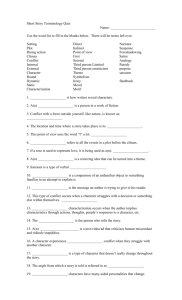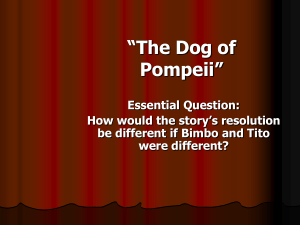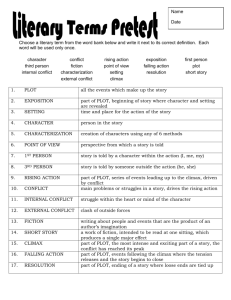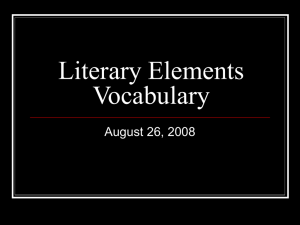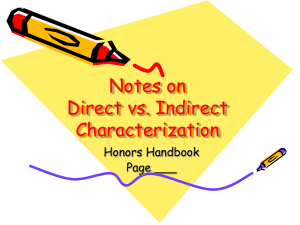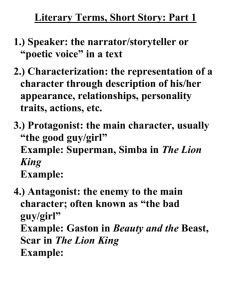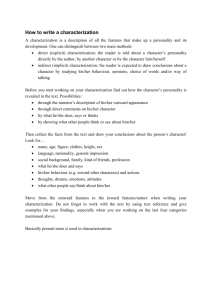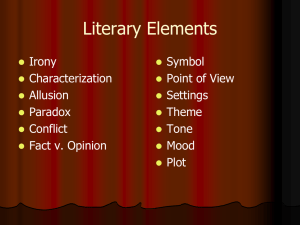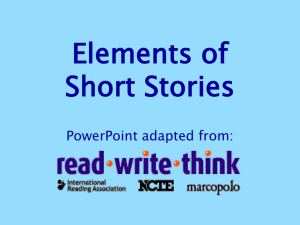Identifying the Elements of A Plot Diagram
advertisement
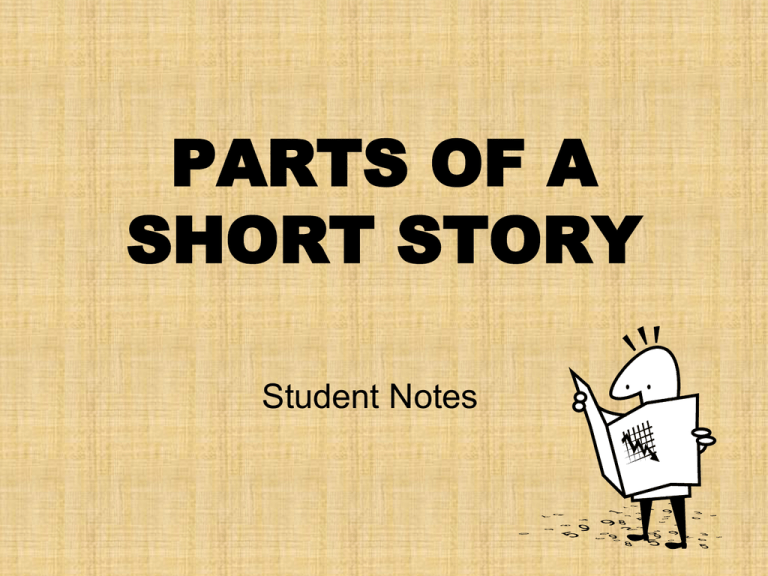
PARTS OF A SHORT STORY Student Notes Plot Diagram 3 2 1 4 5 PLOT DIAGRAM Plot (definition) • Plot is the organized pattern or sequence of events that make up a story. Every plot is made up of a series of incidents that are related to one another. 1. Exposition • This usually occurs at the beginning of a short story. Here the characters are introduced. We also learn about the setting of the story. Most importantly, we are introduced to the main conflict (main problem). 2. Rising Action • This part of the story begins to develop the conflict(s). A building of interest or suspense occurs. 3. Climax • This is the turning point of the story. Usually the main character comes face to face with a conflict. The main character will change in some way. 4. Falling Action • All loose ends of the plot are tied up. The conflict(s) and climax are taken care of. 5. Resolution • The story comes to a reasonable ending. Putting It All Together 1. Exposition 2. Rising Action Beginning of Story Middle of Story 3. Climax 4. Falling Action 5. Resolution End of Story CONFLICT • Conflict is the problem in the story that the character must overcome. • Man vs. Man • Man vs. Self • Man vs. Society • Man vs. Nature • Internal Conflict vs. External Conflict Characterization • Characterization is the process by which the writer reveals the personality of a character. Characterization is revealed through direct and indirect characterization. • Direct Characterization tells the audience what the personality of the character is. • Indirect Characterization shows things that reveal the personality of a character. Characterization • There are five different methods of indirect characterization: – Speech: What does the character say? How does the character speak? – Thoughts: What is revealed through the character’s private thoughts and feelings? – Effect: on others toward the character. What is revealed through the character’s effect on other people? How do other characters feel or behave in reaction to the character – Actions: What does the character do? How does the character behave? – Looks: What does the character look like? How does the character dress? Point of View • 1st Person – The story is told from the “I” point of view. The character tells his/her own story. • 2nd Person – The “you” point of view. Not used very often. • 3rd Person – an outside narrator tells the story. Theme • A theme is the main idea, or message, of an essay, paragraph, or a book. The message may be about life, society, or human nature. Themes often explore timeless and universal ideas and may be implied rather than stated explicitly.

